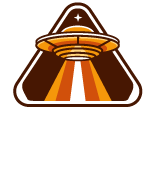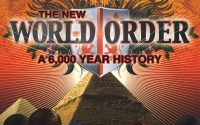The Hollow Earth
The Hollow Earth is a concept that proposes that the planet Earth is hollow. It is an idea that was first introduced in 1895 by William Henry Hudson. Since then, this concept has been expanded by several other writers. Such writers as John Cleves Symmes Jr. and Richard Calder, as well as Billie Faye Woodward.
John Cleves Symmes Jr.
The Hollow Earth theory was first introduced by John Cleves Symmes Jr. He promoted the theory in pamphlets. It stated that the earth is hollow and that there are large openings at the poles. Symmes lobbied for the United States government to send an expedition to the interior of the earth.
In 1776, Symmes was elected to the New Jersey Legislative Council. He also served as a delegate to the Continental Congress.
After the Revolutionary War, Symmes went into business as a trader, a role that was unsuccessful. However, he developed his theories on the hollow Earth while working in his unsuccessful career. His theory stated that plant life existed within the hollow earth.
During the War of 1812, Symmes was stationed in Missouri Territory. He was honorably discharged on June 15, 1815.
Halley’s theory
Edmond Halley developed his theory on the hollow earth in 1692. The idea was based on observations of the changing magnetic field of the Earth. He suggested that Earth is not a solid shell but a series of nested spherical shells. Each inner shell is separated by a special layer of atmosphere and has its own magnetic pole.
Halley’s theory explains why the compass points at different places. He believed the magnetic poles in the north and south were not fixed and were eroding over time. His theory concluded that the poles were affected by something underground.
In 1721, Cotton Mather proposed a similar idea. His theory was not as elaborate but was similar in that it assumed that the outer and inner shells were connected by a magnetized material.
Richard Calder’s Malignos
Richard Calder’s Malignos is a fun, entertaining read. Its main characters are in constant combat for survival. In addition, the story offers a glimpse into a surprisingly altered world.
The story is also about otherness, eroticism, and simulacra. The book is a great example of what might happen if we were to imagine a different reality.
Richard Calder has lived in Thailand and the Philippines. He studied English Literature at the University of Sussex. Before becoming a full-time author, he was a freelance journalist and worked in the press office at the American Embassy in the Philippines. His books include Dead Girls, Frenzetta, and Impakto.
Malignos is a sci-fi novel that takes place on a 53rd century Earth. It’s about a group of demon-like “malignos” that invade the human world. They resemble classical mythological creatures like Steerpike of Gormenghast.
William Henry Hudson’s A Crystal Age
Hudson’s A Crystal Age is a worthy contender in the utopian fiction genre. The tale of one man’s quest to improve his health and happiness in the face of adversity is as relevant today as it was in the 1880s. This story of man and machine is told in a style reminiscent of a medieval chronicle. Although the protagonist’s journey to better health is long and arduous, the story is one of hope, gratitude, and luck.
A Crystal Age is not for the faint of heart, but this novel may be the closest you’ll ever come to being an agrarian utopian. Thankfully, it is also the affluent and effervescent if not for the mismanagement of said agrarian utopia. A major reason is the author’s penchant for being the envy of the locals.
Billie Faye Woodward
The Hollow Earth is an idea that suggests that the planet Earth is hollow. Essentially, it proposes that the interior of the earth is denser than the surface and that there are large openings in the North and South poles. This would allow a person to enter the Earth’s interior.
Some believe that the Earth is hollow, but scientists have no proof. Instead, modern science holds that the earth is an unbroken series of layers. A person living inside the Earth’s core would be near-weightless.
One of the first people to propose a hollow Earth was British geophysicist Edmond Halley in the 1690s. He thought that the outer shells of the Earth had luminous atmospheres. Halley also believed that there were multiple hollow spheres that made up the planet. His theory explained why the magnetic field was so variable.



